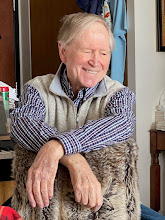(1) Heat index = 120. Dew point = 80. That means it feels very much like a steam bath outdoors right now. When I got out of my air-conditioned car (thank God I have an air-conditioned car) today, my glasses steamed up so that I could not see through them. I am home now and grateful for our big window a-c and the option to stay indoors today.
(2) Don't know much about an-ces-try!
Don't know gen-e-al-o-gy!
(My parody of that perennial favorite of schoolkids)
I'm using documents to find out the location and names of my ancestors. My daddy's family, which in 1900 consisted of him, Noble, at age 2, his brother Ethel (that's right, that's the name), at age 3, and his parents, Tom and Annie Evans, lived in the Providence District of Trimble County, Kentucky, according to the Federal Census of that year. In 1910, according to the Federal Census, they lived in the Locust District of Carroll County, Kentucky, which was a rural community in the narrow valley of Locust Creek, which empties into the Ohio River downstream from Carrollton and the Kentucky River about five miles or so. My daddy said his sister, Lillian, was born in a "holler" and I think he must have been referring to Locust Hollow.
Today I determined that Locust Road is Ky. 1492, off Ky. 36, between Hunter's Bottom Road and US 42, and drove up it. I stopped at a garage at a switchback on the road and saw a young man lying on the floor, the only person around. I walked up to him and said, "Are you all right?"
He assured me he was, just resting in the stifling, wet heat. The sensible thing to do, I told him. He had the usual attire of rural Kentucky men working in such heat, namely no shirt and blue jeans. His straight black hair was cut short, he had dark brown eyes and little hair on his upper body, and he spoke good English with a Spanish accent.
I said, "Is this the community of Locust? Is Locust Creek around here?"
"This is Locust Road," he said.
I told him my grandfather and father had lived in the Locust District in 1910 and I wanted to find out if there was any trace of them now. Perhaps there was a cemetery in the vicinity?
He said he thought there was and produced a smart phone with a Google landscape and showed me the road and the dense forest and high hills on either side of it as it snaked up the "mountain," as he called it. (I told him, "They didn't have that when they lived here." He smiled.) He thought there was some sort of cemetery or churchyard near the summit. I thanked him and went on.
I didn't find a cemetery and it was just too damned hot, but the limestone stream-bed and the trees that line it and the houses to either side and the bridges crossing the creek to people's homes constituted a lovely country setting. I stopped the car beside the stream at the Hopewell Church and looked to see if anyone was around but the church's door was locked. But inside was a chapel with a high A-shaped ceiling and a modest stained-glass window that was glorified by the afternoon sun shining through it. I walked back to the car and stood beside the stream and it was so quiet all I could hear was the whispering of tree-leaves in the light breeze.
I looked at a sycamore four feet in girth standing in the nearly dry stream-bed and looked up through its leaves to apertures to the sky and wondered if my daddy had looked up at it when he lived there as an eleven-year-old boy a century ago.
Subscribe to:
Post Comments (Atom)

No comments:
Post a Comment